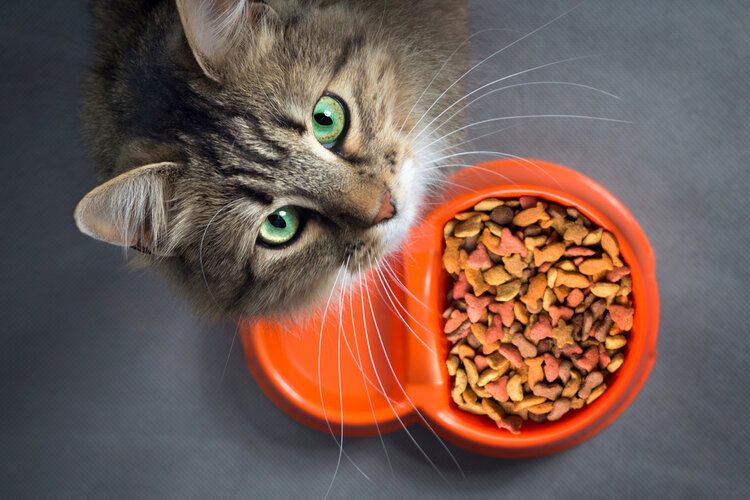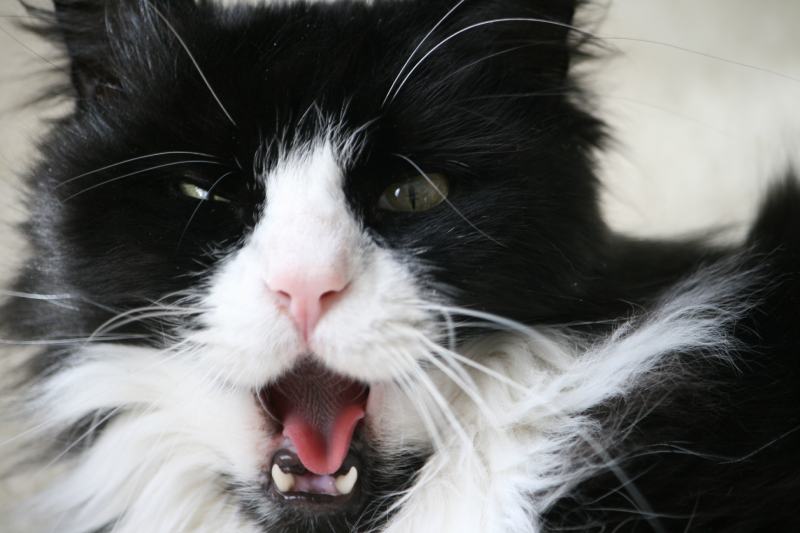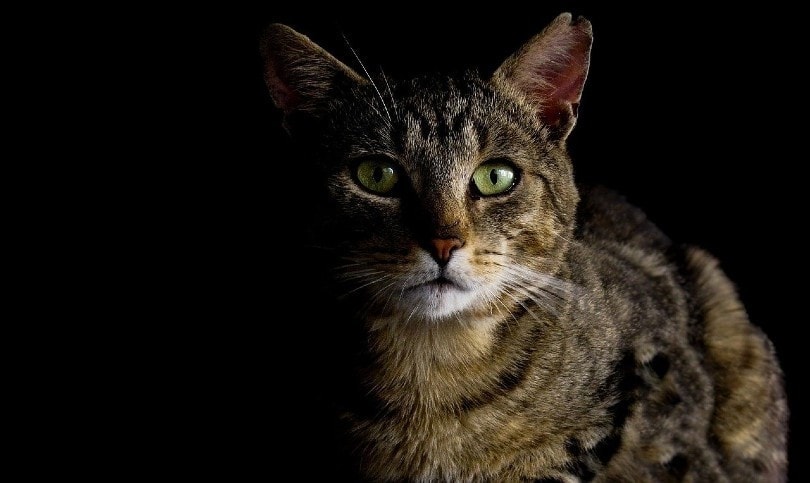Black Sphynx Cat: Facts, Origin & History (With Pictures)
By Beth Crane
Updated on
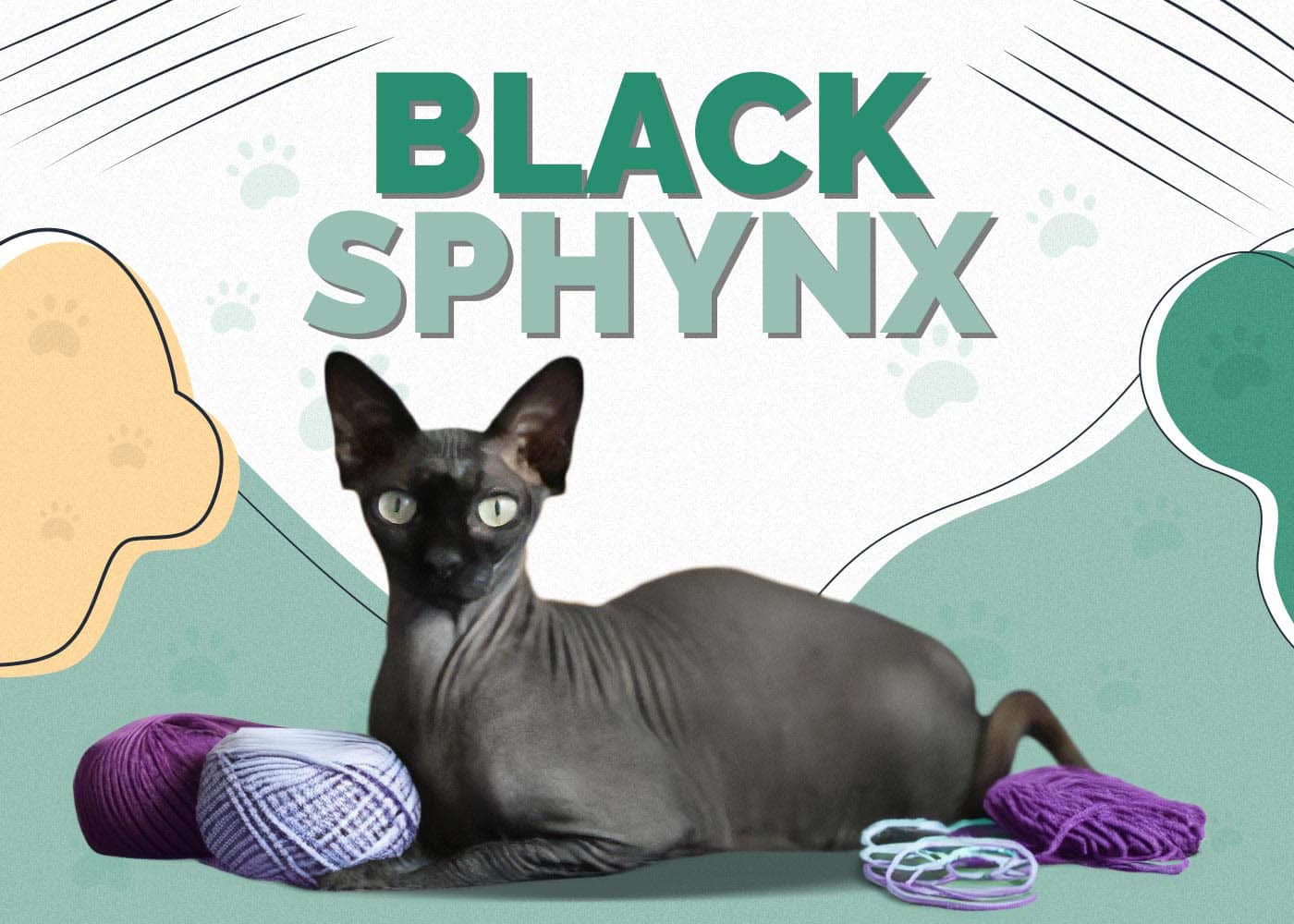
| Height: | 8–10 inches |
| Weight: | 6–14 pounds |
| Lifespan: | 12–15 years |
| Colors: | Black, black with white (Sphynx can come in any color and pattern) |
| Suitable For: | Those looking for a loyal and loving companion, those who want a “Velcro” cat, and families with time to keep up with their skincare |
| Temperament: | Loyal & loving, intelligent, clingy, noisy, silly, energetic |
Sphynx cats are a hairless, velvety breed that has won the hearts of pet lovers worldwide due to their unique appearance. Most of us know these cats come in a shade of “naked” pale pink, but did you know they also come in black? Black Sphynx cats are as common as their pink siblings and have just as much personality and charm. We’ll explore the beautiful black Sphynx in this article and examine where they came from and what makes them so special.
The black Sphynx is just one variation of the many colors and patterns the Sphynx can have. However, these dark-skinned cats have a special name, unlike many other variants. Black Sphynx are often called Canadian Sphynx due to their origin, which makes them extra special. The original Sphynx cat was likely either a fully black hairless cat or a mix of black and white, possibly making black Sphynx the founders of this exciting breed!
Black Sphynx Breed Characteristics
The Earliest Records of Black Sphynx in History
The Black Sphynx originated in Toronto, Canada, in 1966, when one hairless kitten was born to a black and white domestic shorthaired cat named Elizabeth. Her owners were amazed by the velvety feel of the hairless kitten’s skin and chose to call him Prune. This hairlessness was a random mutation, so Prune’s owners spent the next years breeding Prune back to Elizabeth to produce beautiful litters of fully furred and hairless cats.
Some of these were shipped to Europe, where the breed grew in popularity. Once the Sphynx was established in Holland with help from other hairless cats from the US, a little Sphynx named Tulip (or Hathor de Calecat) was imported to the UK by Jan Plumb and Angela Hathbrook (two advocates of the breed).

How Black Sphynx Gained Popularity
The Sphynx grew in popularity mostly because Tulip influenced the cat-fancying shows she frequented. Sphynx cats (including black Sphynx) were routinely bred with hairy cats such as the Cornish Rex, and interest in these hairless beauties skyrocketed after their admission into the CFA (Cat Fanciers Association) and the GCCF (Governing Council of the Cat Fancy). Sphynx cats remain one of the most popular breeds of cats today! Their winning personalities, dog-like loyalty, and tendency to snuggle up with owners under the covers also ensured the black Sphynx had a meteoric rise in popularity.
Add all this to the Sphynx’s diverse “coat” colors and hypoallergenic potential, and you have the perfect cat for many families. They’re even utilized as therapy cats since they’re loving, friendly, and have an affinity for children.
Formal Recognition of Black Sphynx
The Sphynx was pushed back from recognition a few times before finally being accepted. The black Sphynx (along with all other colors) was first recognized by TICA (The International Cat Association) in 1979, followed by a long gap full of rejections for the breed. It wasn’t until 2002 that both the CFA and FIFe (Federation Internationale Feline) recognized the breed, with the GCCF finally granting acceptance to the Sphynx in 2005.
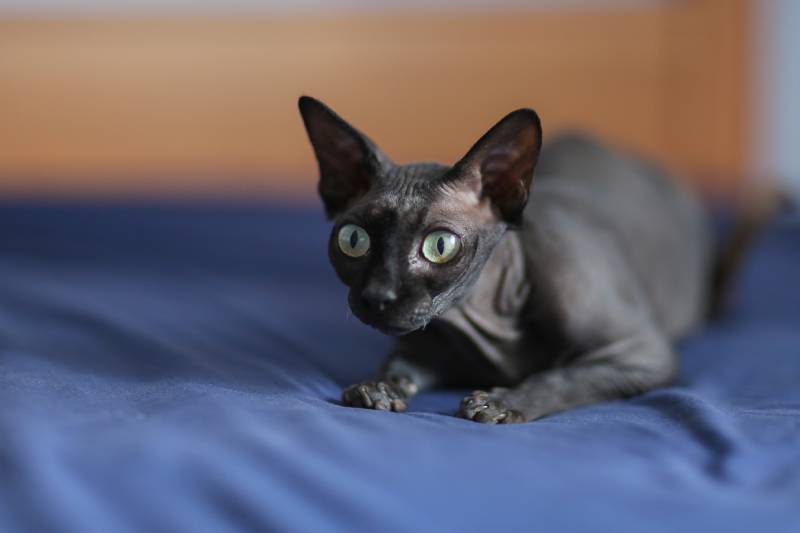
Top 5 Unique Facts About Black Sphynx
1. Black Sphynx Aren’t Entirely Hairless
At first glance, black Sphynx cats might seem completely bald and wrinkly. While the wrinkly part is true, these cats have a soft, downy covering of hair over their entire body that feels like velvet or peach fuzz. Most Sphynx cats also have a patch of thicker hair on their faces over their nose, and some have slightly longer hair on their feet and the tips of their tails.
2. They Often Need More Grooming Than a Regular Furry Cat
All cats produce natural oils on their skin to keep it healthy. In cats with fur, this oil is distributed throughout the coat and gets groomed off by the cat at regular intervals. Because black Sphynx cats are hairless, the oil sits on top of the skin and can build up between the skin folds and the nail beds. Sphynx cats need weekly bathing because of this, and they need regular maintenance to prevent the build-up of oil on their feet and around their wrinkles. This makes them more work to groom than most furry cats!
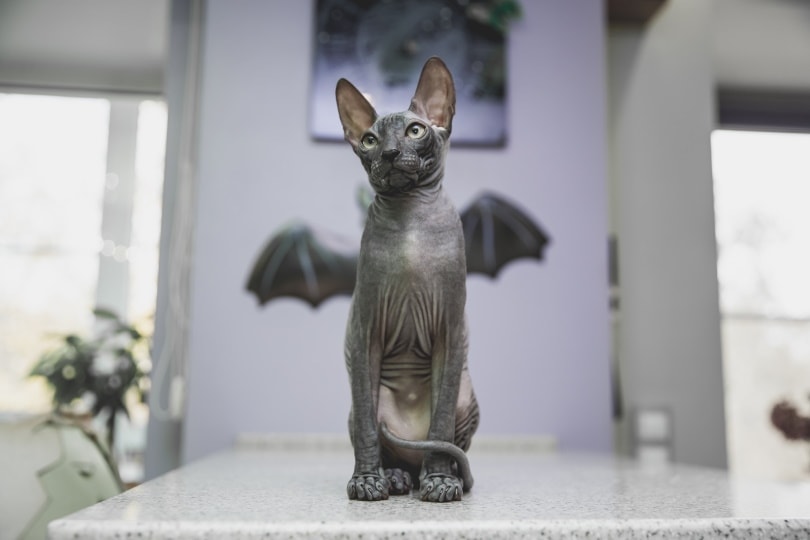
3. They Can Suffer From Devastating Health Problems
Despite their gorgeous appearance, black Sphynx cats can suffer serious health problems due to how they were bred. Hypertrophic Cardiomyopathy is frequently inherited in the breed, which is a condition causing enlargement of the heart muscle that can lead to heart failure.
4. They Should Always Be Kept Inside
Because the Sphynx doesn’t have a coat, they are at the mercy of the elements. UV light from the sun can cause burns and increases the risk of skin cancer in this breed, and they get cold very easily. A Sphynx that gets trapped outside in cold weather could easily freeze to death, so many owners and veterinary institutes state that they should be kept inside at all times.

5. They Are Attention Hogs
The Black Sphynx is known for its dog-like personality; they cling to their owners for attention and can be pretty vocal when they don’t get what they want! The black Sphynx isn’t a cat for independent people, and they can be prone to separation anxiety, making it difficult to leave them alone.
Does the Black Sphynx Make a Good Pet?
Black Sphynx cats make excellent pets for owners experienced in keeping cats and those who know what to expect from the breed; they are very different from “normal” cats! The Sphynx needs regular bathing and daily skin maintenance, and they often need to wear sunscreen or clothing to keep them safe from the weather.
They are also very clingy and need their owners around 24/7. Despite all this, many people who own a Sphynx get completely obsessed with the breed due to their loving temperaments, silly antics, and tendency to snuggle under the covers. Whether you love them or hate them, the black Sphynx is a show-stopping and head-turning breed.
Conclusion
Black Sphynx cats are just one color of a rainbow of possible hues in this bizarre-looking breed. These loving cats have been around for a while but were only popular in the cat-fancying world starting in the 2000s. The black Sphynx will need daily maintenance and weekly baths to upkeep their fuzzy, delicate skin, but they’ll be happy to make it as easy as possible as long as they get to spend time with their owners.
See Also:
Featured Image Credit: Olga Shusters, Shutterstock


